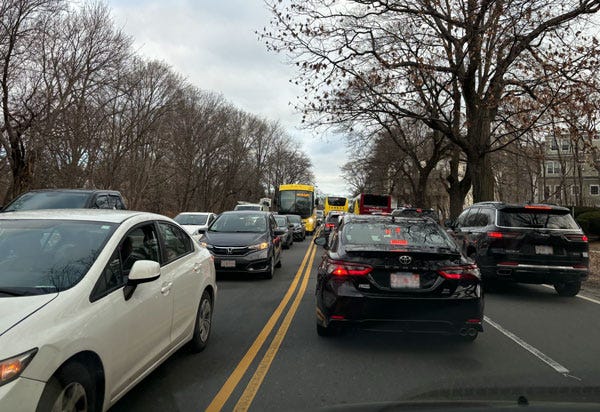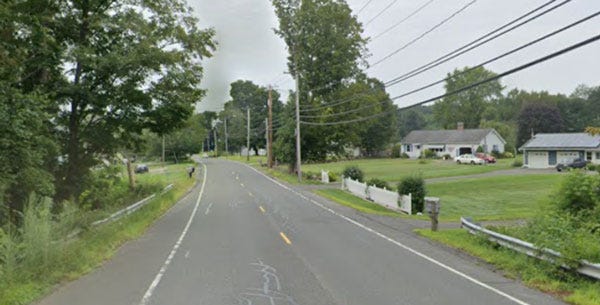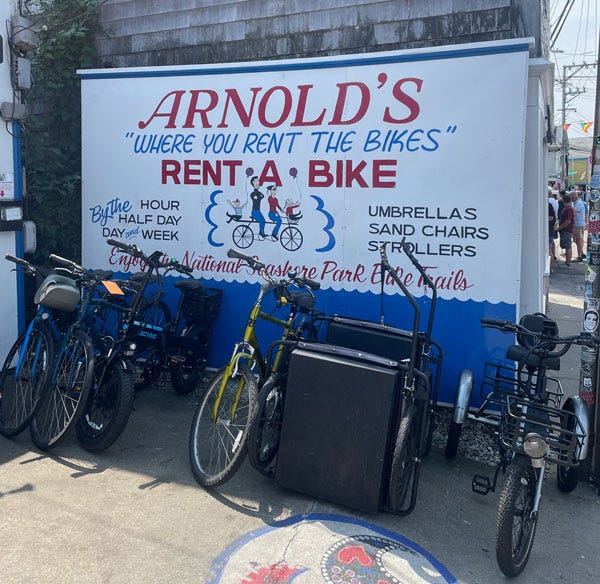Welcome to another edition of Willoughby Hills!
This newsletter explores topics like history, culture, work, urbanism, transportation, travel, agriculture, self-sufficiency, and more.
As Hurricanes Helene and Milton just showed us, the threat from climate change is very real and is already here. In order to stave off the worse effects of climate change, we need immediate action to slash our emissions, which will also mean fundamentally rethinking many of the systems in our world.
Anytime the topic of reducing emissions is discussed, cars are rightly seen as a target for reform. According to the EPA, transportation makes up 28% of U.S. greenhouse gas emissions, with light duty vehicles making up 57% of that sector.
However, when it’s come to reducing emissions from cars, the solution often seems to be more cars, albeit slightly different ones. Under Joe Biden’s presidency, electric vehicles have been heavily subsidized, with a $7500 federal rebate available at the point of sale and additional rebates available for home charging.
Similarly, under President Obama, the Car Allowance Rebate System (CARS), also known as “Cash for Clunkers” offered rebates for people trading in older, less efficient cars for newer, more efficient ones. This program’s goal was partially to reduce emissions, but also (and perhaps more pressing at the time) to stimulate the sale of new cars at the height of the Great Recession when American car makers were faltering.
In both cases though, the government has decided to prioritize replacing cars with other cars. Rather than reform the system that makes us so car dependent, our leaders have chosen ways to make the problem slightly less bad, while never fully fixing anything.
Fuel efficient or electric cars that are only carrying one passenger still clog our roads, still create traffic jams, still can be the cause of accidents.
If we truly want to dramatically reduce our emissions, we need to start looking at alternatives to the car and putting our money towards allowing those alternatives to flourish.
I’ve written about some of these ideas in the past, but have been reconsidering them in my own life lately.
For example, the closest store to my new house is about 1.5 miles away. It’s a nice farm stand that sells local produce, meat, milk, eggs, some light groceries, and even has a garden center. It’s the kind of place that I should be going to regularly and am lucky to have so close by.
According to Google Maps, it would take me about a half hour to walk that distance, or 7 minutes to cycle there. But I likely wouldn’t do either because the trip isn’t designed to be safe in anything but a car.
The road between my house and this farm store is fairly narrow with a speed limit of 40 miles per hour. There is a sidewalk, but only for about half of the route. Once the sidewalk ends, I would be forced to either walk along the shoulder or cut through people’s front yards.
There’s also no bike lane of any kind, not even a sign that says “share the road.” If I chose to cycle to this store, I would be forced to dodge high speed, rural traffic, which may or may not be used to bikes and may or may not give me enough space to feel safe. (As of 2023, Massachusetts law requires that motorists give cyclists at least four feet of space when passing, although that doesn’t always happen in practice).
What if instead of investing in replacing cars with cars, we built sidewalks and bike paths?
I explored this idea in a newsletter last year, using Nashua, New Hampshire as an example. The big box shopping district is surrounded by apartment complexes. In theory, those hundreds of families should be able to easily and safely walk to a grocery store or restaurant- all less than a mile from their front door. In practice, bad sidewalk design and a lack of crosswalks makes this dangerous and possibly even fatal.
With that new infrastructure could also come incentives for other types of transportation that are less carbon intensive. E-bikes and electric scooters, for example, can be effective ways to lessen car trips which use much less electricity than an electric car.
A federal subsidy of 30% of the purchase price of e-bikes has been proposed several times but has yet to pass Congress, however many local e-bike incentive programs to exist. Connecticut had a program last summer with funding for 1,000 bikes that had to shut down just 10 days after its introduction because the government was flooded with more than 6,000 applications!
In Denver, a pilot program from 2022 found that e-bike owners replaced an average of 3.4 gas powered car trips. Furthermore, 29% of people who took advantage of the rebates offered in Denver were new to riding entirely. So the government wasn’t just paying to let cyclists upgrade their rigs- they were literally getting people out of cars.
Of course, there’s a chicken and egg problem with these incentives. Most of the infrastructure in this country is similar to my route to the local farm stand store- high speed roads which were never designed with the safety of cyclists in mind.
There’s also the challenge of what happens when a cyclist arrives at a destination and need to park and lock their bike. Businesses need to begin installing safe and accessible bike racks. Perhaps offering a tax break to businesses for installing these racks, or requiring them in the building code for new construction is a solution.
All of the solutions I’ve been discussing have involved private transportation, but there’s a need for more robust pubic transpiration as well.
Amtrak recently announced a temporary service change that connects Chicago to Miami with direct train service. The entire route takes nearly 48 hours to complete.
The good news is that the line connects many big cities in between: Cleveland, Pittsburgh, Washington, Richmond, Raleigh, Columbia, and Jacksonville. But a 2 day journey across the entire route that can be completed in 3 hours by plane doesn’t feel sustainable.
We need robust, fast, and convenient high speed rail in this country that can quickly and efficiently connect our major cities. We’ve needed it for decades.
But we also need rail service that can reduce daily commuter traffic on our interstates and can replace individual commuters in personal cars.
I was shocked when I moved to Western Massachusetts to learn that there’s no real rail connection between Springfield and Boston. The only train that directly services that route is the Lake Shore Limited Amtrak train between Boston and Chicago, which runs once per day, and not at convenient times for commuting.
I’ve since learned that there was service between the two cities for years and that there’s still track there which could be utilized. The state has commissioned two studies on the viability of this route, one from 2013-2016 and the other from 2018-2021. Governor Charlie Baker gave the project a green light in 2022. If I’m lucky, the service will open before I retire.
And again, this is not net new infrastructure. This is some new track construction to restore double tracking, plus upgrades to signaling, on existing right of ways. The space is there, many of the pieces are there, but we are dragging our heels in studies while the planet burns.
We are running out of time to make meaningful changes to the way we live, work, and travel in this country. Instead of putting our energy towards arming other countries, building up our own military, or subsidizing fossil fuel extraction, we need to putting our collective energy and resources to rethinking everything.
Yes, this involves big things like EVs and trains. But it can also mean much smaller things like sidewalks and bike racks.
Thanks for reading Willoughby Hills! Subscribe for free to receive new posts and support my work.
Related Reading
Tesla's Cybertruck is Fast Fashion on Wheels
If you’ve missed past issues of this newsletter, they are available to read here.








I agree that bikes and sidewalks must be part of the fixes, as you noted in the conclusion here. I think self-driving cars, though, can help get us there, too actually. https://collegetowns.substack.com/p/parking-where-were-going-we-dont
Adding rail infrastructure is much more costly than filling in the gaps of bike/ped/scooter/mobility devices, especially where it can be easily achieved in existing public right-of-ways. NH and other snowy places also need budgets & resources for snow removal for these facilities - you know, equal treatment with motorized travel lanes. Sometimes road diets - simply repainting motorized travel lanes - can add enough room for bike/ped/scooter/mobility devices - an extremely low cost alternative since it purely reconfigures what's already there and has a proven traffic calming/speed reduction for motorized vehicles. With HSN & QVC selling etrikes & sit-on scooters, we create more demand. If you build it, they will come - actually, they're already waiting with vast pent-up demand.